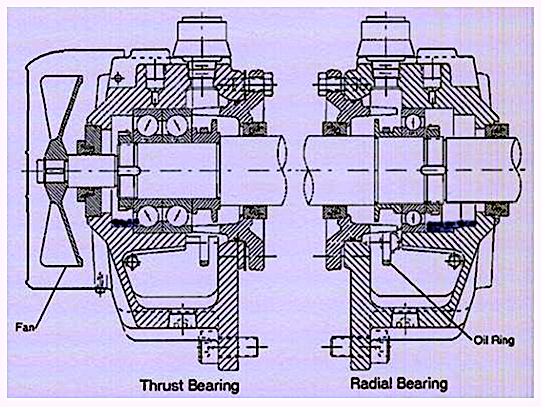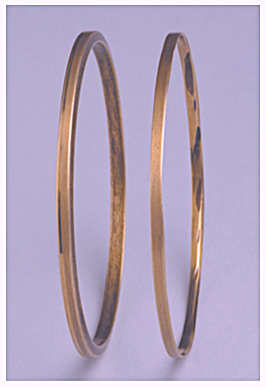In 1986, a facility with slightly more than 3,200 process pumps reported its failure distribution over a 5-year period. Then, as today, the reporting plant recognized that all failures, regardless of what machines are involved, can be attributed to one or, perhaps, two meaningful classifications of failure causes. Those causes of failures include:
-
- Design defects
- Material defects
- Processing and manufacturing deficiencies
- Assembly or installation defects
- Off-design or unintended service conditions
- Maintenance deficiencies (neglect, procedures)
- Improper operation.
The plant reporting its failure distribution also accepted as a fact that mechanical parts can fail due to one of only four cause categories: Force, reactive environment, time, and temperature. For the past five decades, we have remembered these by the acronym “FRETT.” Forward-looking plants have taught “FRETT” to their field and shop maintenance workforces. “FRETT” is a theme worth explaining several times.
Editor’s Note:
This article is based on a chapter in the author’s book
“Optimized Equipment Lubrication, 2nd Edition, 2021;”
De Gruyter, Berlin/Boston, (ISBN 978-3-11-074934-2).
Additional chapters will be highlighted on this website in the future.
At an oil refining facility with 3,200 process pumps that was often visited by the author, the failure distribution was roughly as follows:
-
- Design defects 6%
- Material defects 4%
- Processing and manufacturing deficiencies 8%
- Assembly or installation defects 20%
- Off-design or unintended service conditions 18%
- Maintenance deficiencies (neglect, procedures) 32%
- Improper operation 12%.
Upon closer examination, the above statistics conveyed two important observations:
Most pumps fail because of maintenance- and installation-related defects. Since pumps generally represent a mature product, fundamental design defects are relatively infrequent. Reliability professionals at that facility could readily vouch for two more facts:
-
- Pump failure reductions were largely achieved by appropriate action of plant reliability
staff and competent plant or contract maintenance work forces. - Contractors were long-term assignees to the plant; at best-in-class (BiC) facilities,
they received the same training as regular employees.
- Pump failure reductions were largely achieved by appropriate action of plant reliability
EMPLOYEE MOTIVATION MATTERS
From the above failure distribution, it appears that the pump manufacturers rarely are to be blamed. Nevertheless, it is unfortunate that not all pump manufacturers are knowledgeable in pump failure avoidance. That is why the owners’ engineers must take the lead in identifying and upgrading the “weak links.” Judicious upgrading is very often possible and is generally very cost-effective. The merits of upgrading can be visualized by pondering the size of large plants.
PLANT SIZE IS NOT A FACTOR
In the mid-1980s, a chemical plant in Tennessee had over 30,000 pumps installed and a large facility near Frankfurt, Germany, reported over 20,000 pumps. However, the largest industrial pump user appeared to be a city-sized plant situated on the banks of the Rhine River, south of Frankfurt. There were approximately 55,000 pumps installed at that one location alone.
U.S. oil refineries typically operate from 600 pumps in small, to 3,600 pumps in large facilities. Among old refineries, some had an average pump-operating times of over nine years. However, some achieved an average of only about 20 months.
Some of the very good oil refineries were new, but some in the same category were relatively old. Certain bad performers belonged to multi-plant owner “X” and some good performers also belonged to the same owner “X.” It can, therefore, be said that equipment age does not preclude obtaining satisfactory equipment reliability. Organizational mindsets and employee motivation are important and will make the difference.
RELIABILITY FOCUS VS. REPAIR FOCUS
Experience shows that facilities with low pump mean-time-between failure (MTBF) or mean-time-between repair (MTBR) are almost always repair-focused, whereas plants with high pump MTBF are essentially reliability-focused. Repair-focused mechanics or maintenance workers see a defective part and simply replace it in kind. Repair-focused plants turn their mechanics into parts changers instead of failure analysts.
Conversely, reliability- focused plants ask why a part failed, decide if upgrading is feasible, and then determine the cost justification or economic payback achieved by implementing suitable upgrade measures. Needless to say, and always well worth repeating, is that reliability-focused plants teach “FRETT” and motivate their maintenance-technical staffs. These staffers seek to implement every cost-justified improvement as soon as possible. The following reliability-focus example discusses why the power end of a pump can fail, and how to avoid such failures.
EVEN ELUSIVE FAILURES HAVE CAUSES
Causes of failures, elusive or not, can be discovered. Suppose the pump bearing housings shown in Fig. 1 require bearing replacements. But why did the bearings fail? Answer: Lube oil trapped between the bearings and their respective end caps cannot escape. Trapped oil will overheat, and its carbon residue degrades lubricants and bearings alike. Both will degrade if drain holes are missing from the picture; always insist on them being provided. Unless this discrepancy is recognized and rectified by a reliability-focused owner or a competent pump-repair shop (“CPRS”), the degradation events will repeat themselves. Short bearing life will result and probably cost the owner company and its stakeholders dearly.
While replacing bearings, you might also pay attention to Fig. 2. Here, an oil ring shows substantial abrasion damage, and several contributing reasons likely exist. Cheap oil rings are not usually stress-relief annealed. Unless stress-relieved before finish-machining, they will become out-of-round and will slip and skip. Also, unless the driving and driven shafts are installed parallel to the true horizon, oil rings will run downhill and often contact bearing housing-internal or cast-in components. As abrasive wear takes place, the two oil rings in Fig. 2 will slow down, and contaminated oil will reach the bearings.
Both examples are among dozens which demonstrate the value of employing and retaining a well-trained work force. Some plants practice structured and well-guided maintenance efforts; moreover, good supervisors do double duty as experienced teachers. Their work execution and follow-up inspections are well planned and executed. Still, other plants are quite remiss in allocating time, brain power, and monetary resources to these essential pursuits. Furthermore, one plant may be located in a geographic area with an abundance of competent repair shops while another plant is not.

Fig. 1. Lube oil trapped between bearings and their respective end caps cannot escape.
Consider this an elusive cause of bearing failure.

Fig. 2. Oil rings in new (left) and badly worn (right) condition.
Cheap oil rings are not stress-relief annealed; they tend to deform and malfunction.
Oil rings abrade while skipping around and contacting housing-internal surfaces.
TRUE KEYS TO ASSET PERFORMANCE
When the implications of Fig.. 1 and Fig. 2 were pointed out to groups of maintenance and reliability technicians in four different countries, it was clear that fault-inducing details of this type were constantly being overlooked. It was also clear that while organizational initiatives such as Asset Management and Operational Excellence had gained prominence, attention to detail and the systematic acquisition of highly relevant in-depth knowledge remained vastly under-appreciated. When all is said and done, understanding these details is the absolute bottom line, one of the true keys to asset performance.
Other true keys to asset performance include design knowledge, maintenance knowledge, and operating knowledge. Each of these branches of knowledge needs to be implemented responsibly. There must be accountability and even-handedness in all relationships among employees and their supervisors. An ethical reward system needs to be in place for knowledge to be practiced and implemented with unerring continuity and wisdom.
But so as not to lose sight of the key words “Bearing and Lubrication” in this article’s title, there are strong indications that fewer spare parts will be consumed by facilities that implement and inculcate the necessary knowledge in well-structured ways. Plants and facilities staffed by highly competent maintenance and reliability professionals hate having to cope with repeat failures. These professionals view every single maintenance intervention as a challenge to their desire to upgrade, or the desire to design-out the need for excessively frequent preventive maintenance actions. Highly competent maintenance and reliability professionals loathe unplanned downtime events and the need for too much maintenance. They estimate the value of upgrading by making good use of information in the book from which this article excerpt has been taken and make sure weak links in a pump’s component chain are beefed up or, better yet, designed out.
WORDS TO THE WISE
Note that only two root causes of repeat failures exist. Solid professionals agree, without equivocation, that all repeat failures must be ascribed either to the fact that the root cause of a failure has not been determined, or that the root cause is indeed known but remedial action is not being pursued. Highly experienced practitioners of maintenance and reliability improvement skills will never be at ease with either of these two possibilities, that is, not knowing what led to a failure, or knowing why an asset failed and doing nothing about it. Competent practitioners view these challenges as personal affronts: like a medical doctor losing a patient to the common cold.TRR
Editor’s Note: Click Here To Download A Full List Of Heinz Bloch’s 24 Books
ABOUT THE AUTHOR
Heinz Bloch’s long professional career included assignments as Exxon Chemical’s Regional Machinery Specialist for the United States. A recognized subject-matter-expert on plant equipment and failure avoidance, he is the author of numerous books and articles, and continues to present at technical conferences around the world. Bloch holds B.S. and M.S. degrees in Mechanical Engineering and is an ASME Life Fellow. These days, he’s based near Houston, TX.
Tags: reliability, availability, maintenance, RAM, pumps, bearing, lubrication, lubricants, failure distribution



